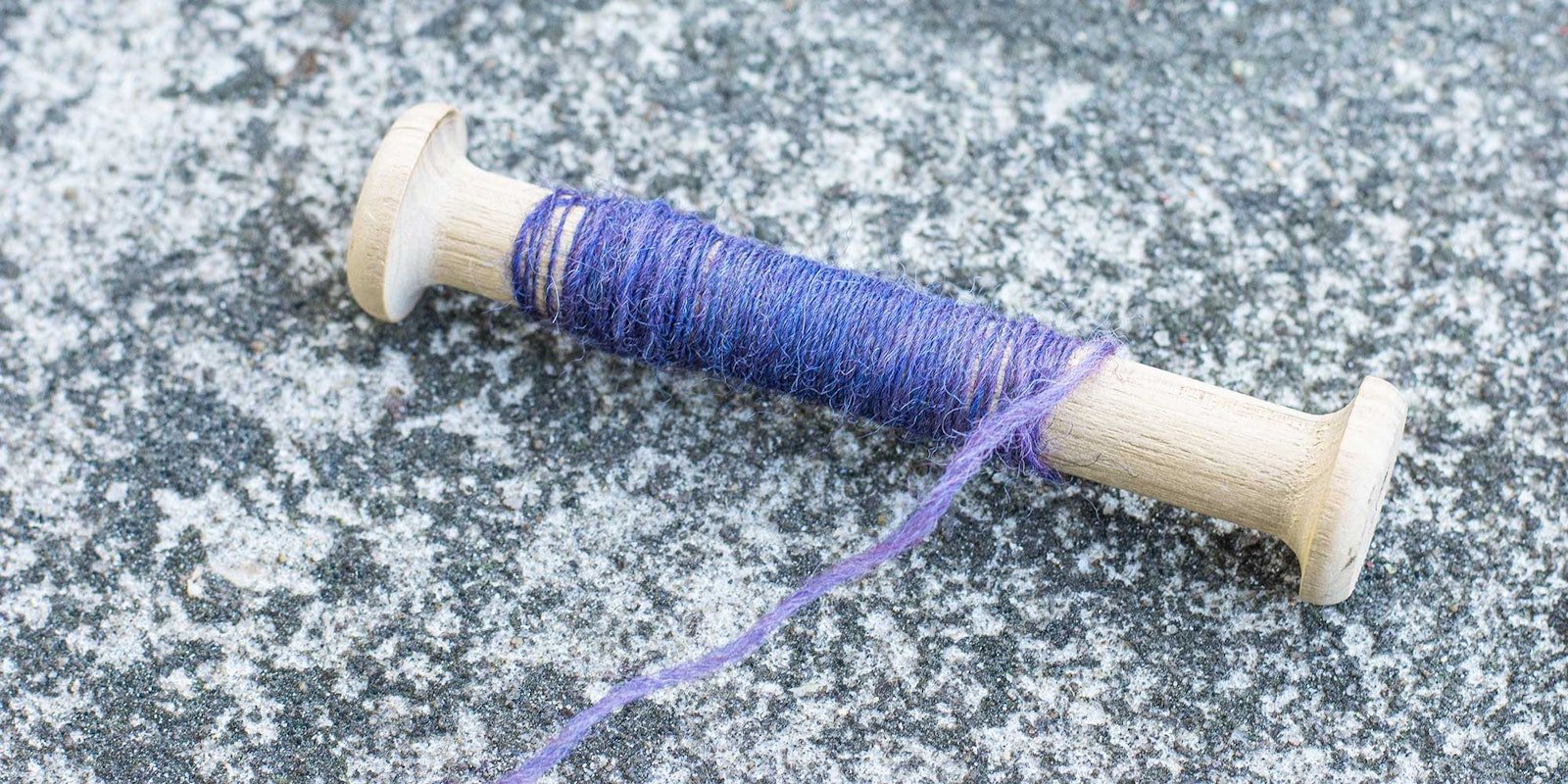Contents
As a new spinner, I had a wheel with four bobbins, and that seemed like plenty to me—until I read that it’s a good idea to spin all your singles first and then ply. A drawer or shelf full of extra bobbins seemed like a romantic but expensive notion. Luckily, I found an affordable storage bobbin that was compatible with my electric drill, and the problem was solved.
Since then, I’ve become aware of a multitude of options when it comes to storage bobbins—we spinners are a clever bunch! It also helps that many of us engage in multiple fiber hobbies, making cross-pollination of ideas possible, especially when it comes to adapting tools to suit our purposes. Some storage bobbins themselves are affordable—or even free—but require a lot of elbow grease to make or use. Others are affordable, but the tools used to wind them are a significant investment. With all the options out there, it can be hard to know what to choose! This guide, complete with flowcharts to walk you through the process, is a great place to start if you’ve been thinking about getting your own storage bobbins.
Do I Need Storage Bobbins?
The short answer is no, you really don’t need storage bobbins—people have spun yarn for thousands of years without them. You can wind plying balls by hand or use a simple stick to hold your singles. But for modern spinners, storage bobbins are nice to have. One reason I love to use storage bobbins is to ply-crastinate. I’m not always sure if I want my yarn to be a two- or three-ply, but I know I want to spin my singles a certain way. Using storage bobbins lets me spin all my singles at once, then sample ply structures and make swatches before proceeding to ply the rest.
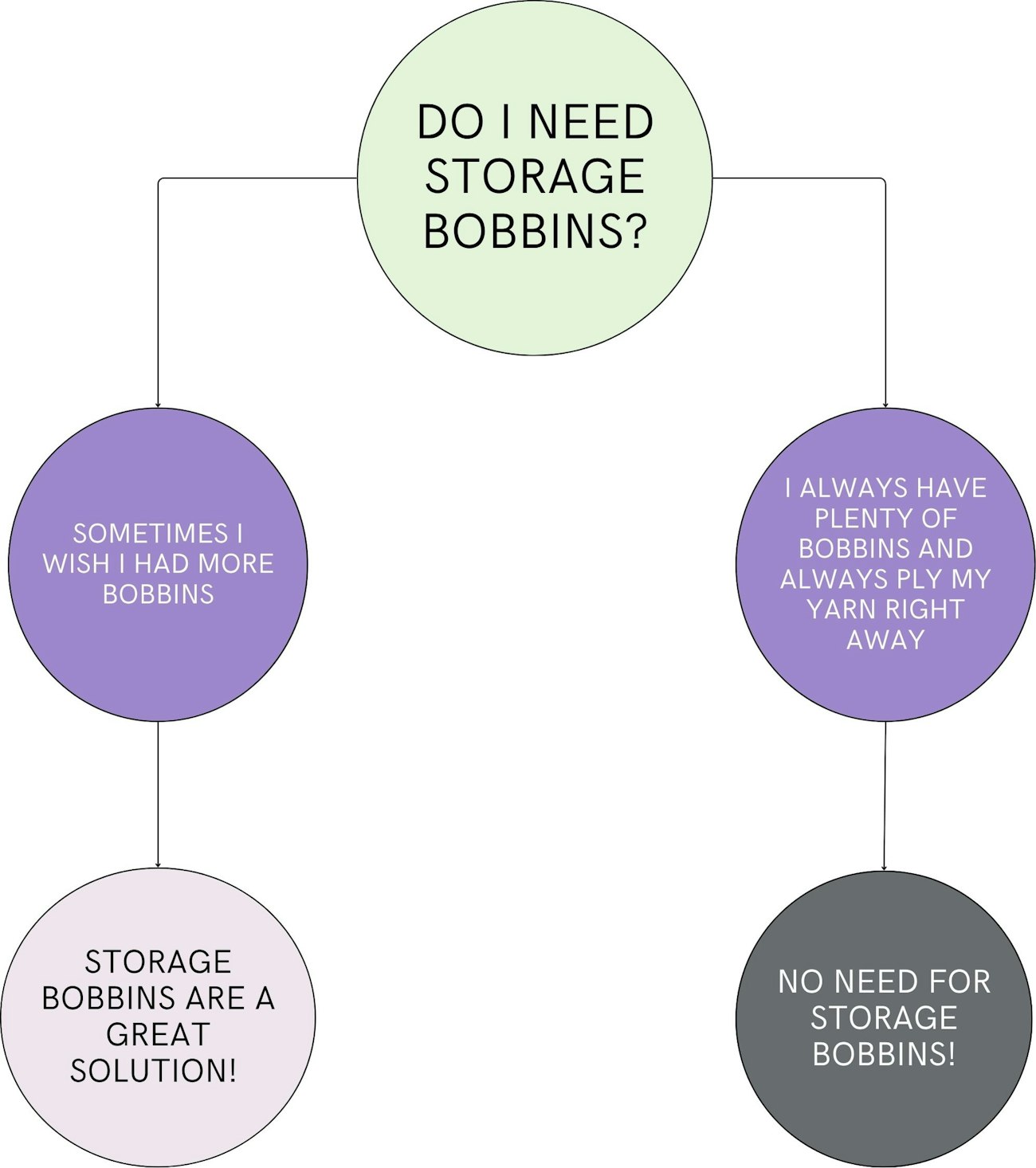
How to Choose a Storage Bobbin Winding System
Choosing a storage bobbin winding system depends on several factors—including your own preferences, tools you might already have available, amount of singles you need to store, and budget. Check out this handy flowchart to help you choose!
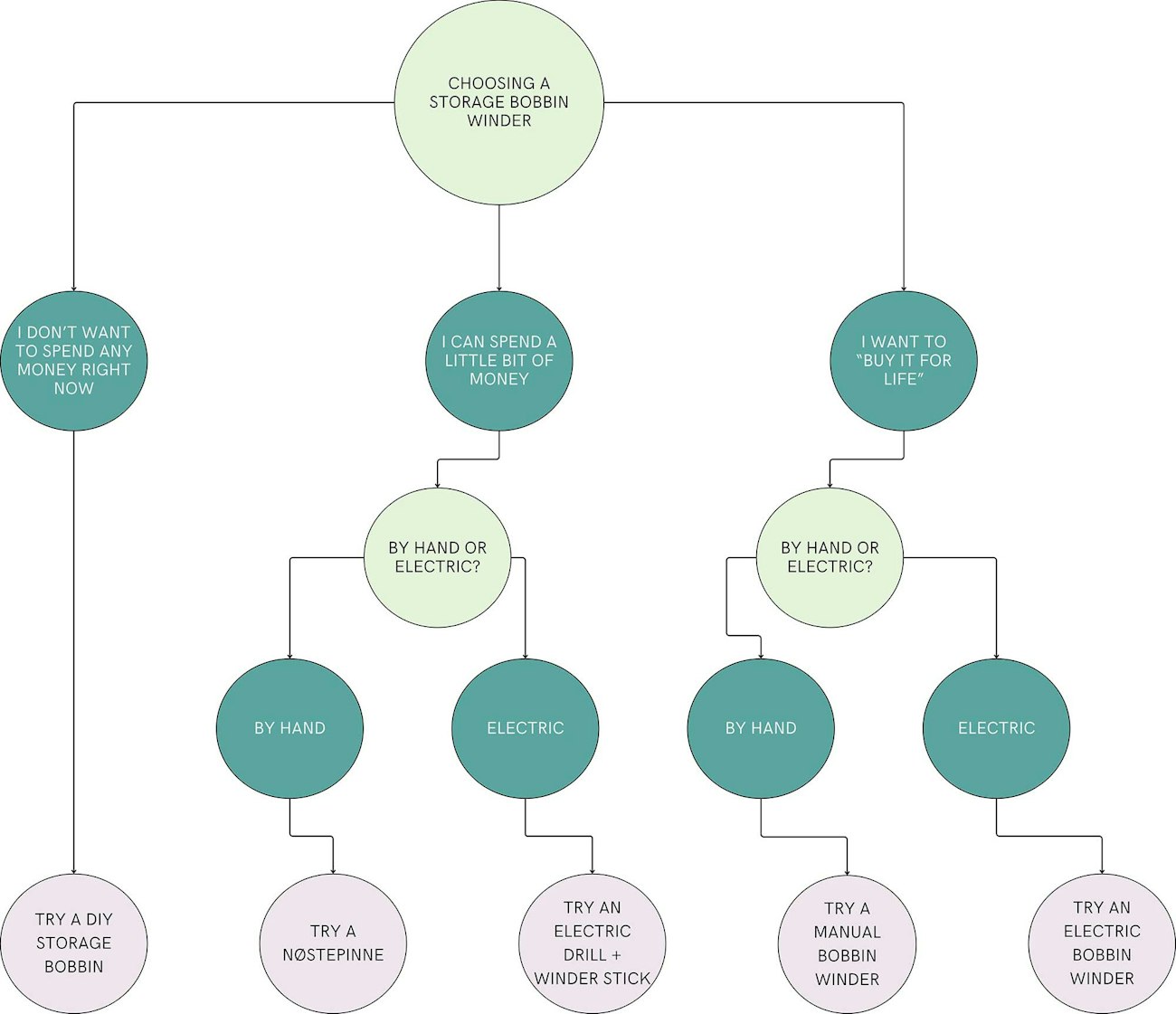
Low- and No-Budget Options
If you don’t want to spend a lot of money, there are plenty of budget options that don’t require a lot of investment—but they do take a bit more effort to wind by hand. These include a traditional nøstepinne, flat winding sticks like the one shown from Katrinkles, hollowed-out sticks, and even cardboard tubes rescued from your recycling bin. Besides cost, one of the main benefits of these options is their portability. You’ll never need to look for an electrical outlet, making them a great option for taking along to spinning classes or demonstrations.
With a nøstepinne or winding stick, you will create a center-pull ball that you can ply from or store until you’re ready to ply. Empty cardboard tubes and hollowed-out sticks can be used like any other bobbin on your lazy kate, although you might need to get creative if you want tension on these “bobbins” as you ply.
Get a closer look! Click on any image below to view it in full-screen mode.
If You Already Have an Electric Drill
If you already have an electric drill at home, a winding stick that fits into your drill chuck is a fantastic option. There’s a wide range of these that fit all different types of storage bobbins—from plastic drinking straws, to weaving bobbins, to 3D-printed bobbins, and just about anything else you can think of! We featured several of these in the Summer 2025 issue of Spin Off, and wanted to share a couple more here.
These winding sticks may fit only one type of storage bobbins or several types—more on the bobbins themselves in a bit—so be sure to choose carefully, depending on your needs. The main benefit here is a blend of speed and affordability, and depending on the storage bobbin/winder stick combination you choose, the ability to store lots and lots of singles for later.
Click on any image below to view it in full-screen mode.
Dedicated Bobbin Winders
If you find yourself winding a lot of storage bobbins—or find yourself squabbling over the availability of your household’s electric drill—you might want to consider a dedicated bobbin winder. Take care, as this might lead to other fiber hobbies that you didn’t anticipate, like weaving!
There’s a whole range of dedicated bobbin winders, from single-ended ones with a manual crank, to fancy electric ones with built-in tensioners and yardage counters. Except for a handful of specialty bobbins, many of these dedicated bobbin winders are compatible with a wider variety of storage bobbins than the electric drill/winder stick combination. They’re also more expensive and less portable, especially if you choose to go electric.
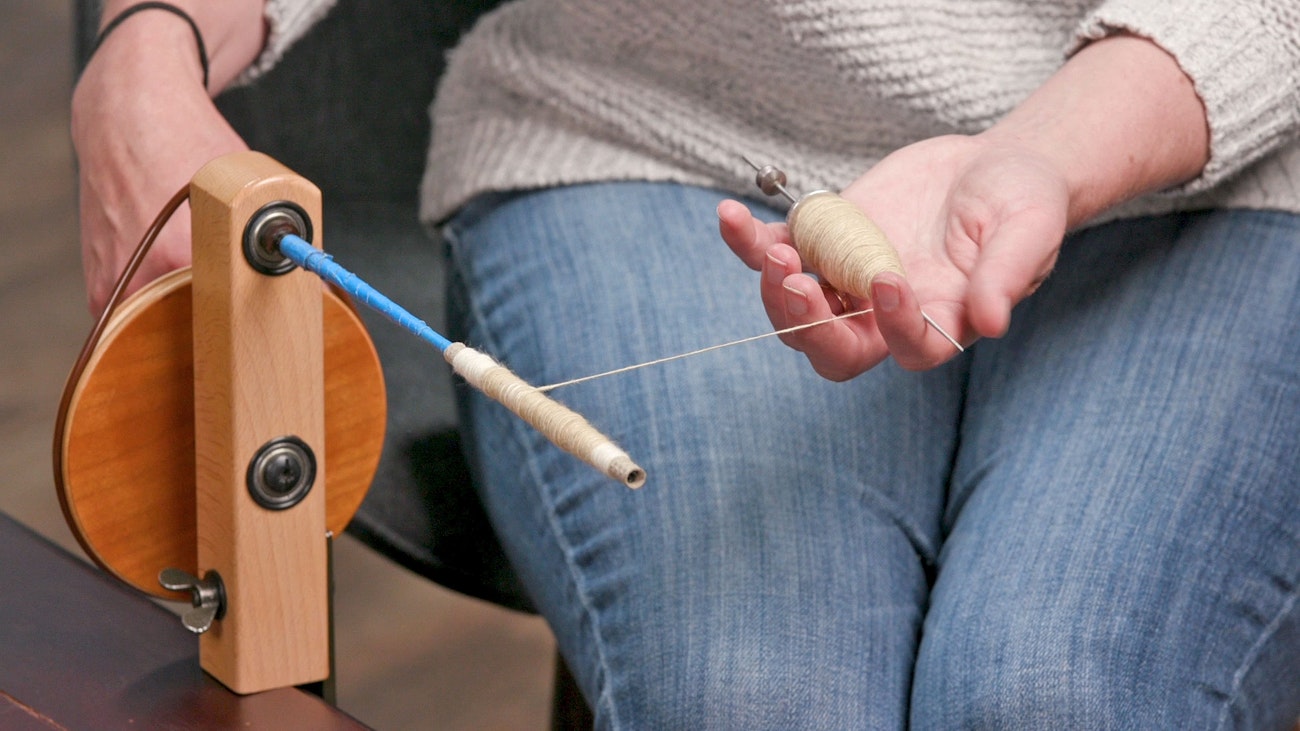 Kate winds cotton from her charkha bobbin onto a storage bobbin using her bobbin winder. Note how she's adapted her bobbin winder's quill to be compatible with a wider range of bobbin types. Photo from the online course How to Spin on a Charkha with Kate Larson, by Long Thread Media
Kate winds cotton from her charkha bobbin onto a storage bobbin using her bobbin winder. Note how she's adapted her bobbin winder's quill to be compatible with a wider range of bobbin types. Photo from the online course How to Spin on a Charkha with Kate Larson, by Long Thread Media
What Kind of Storage Bobbins Should I Get?
The type of storage bobbins you choose is closely related to your choice of winding system, but after that, it’s a matter of personal preference. As a spinner who also happens to weave, I have a large collection of weaving bobbins. Some are large, some are small, some are plastic, and some are wood. I happen to be partial to cardboard bobbins intended for sectional warping. These are very affordable and have a high storage capacity, but need to be used with a more expensive dedicated bobbin winder.
One consideration many spinners worry about is capacity, which depends on the thickness of the yarn you plan to spin. I found that at 11 wraps per inch, a typical 4" weaving bobbin held about 18 yards, and a 6" weaving bobbin held about 28 yards. At 40 wpi, this increased to 100 yards and 225 yards, respectively. A sectional warping bobbin typically can hold as much as my standard wheel bobbins, while the large Snap Storage Bobbins from WooLee Winder can hold as much as my jumbo bobbins—or more!
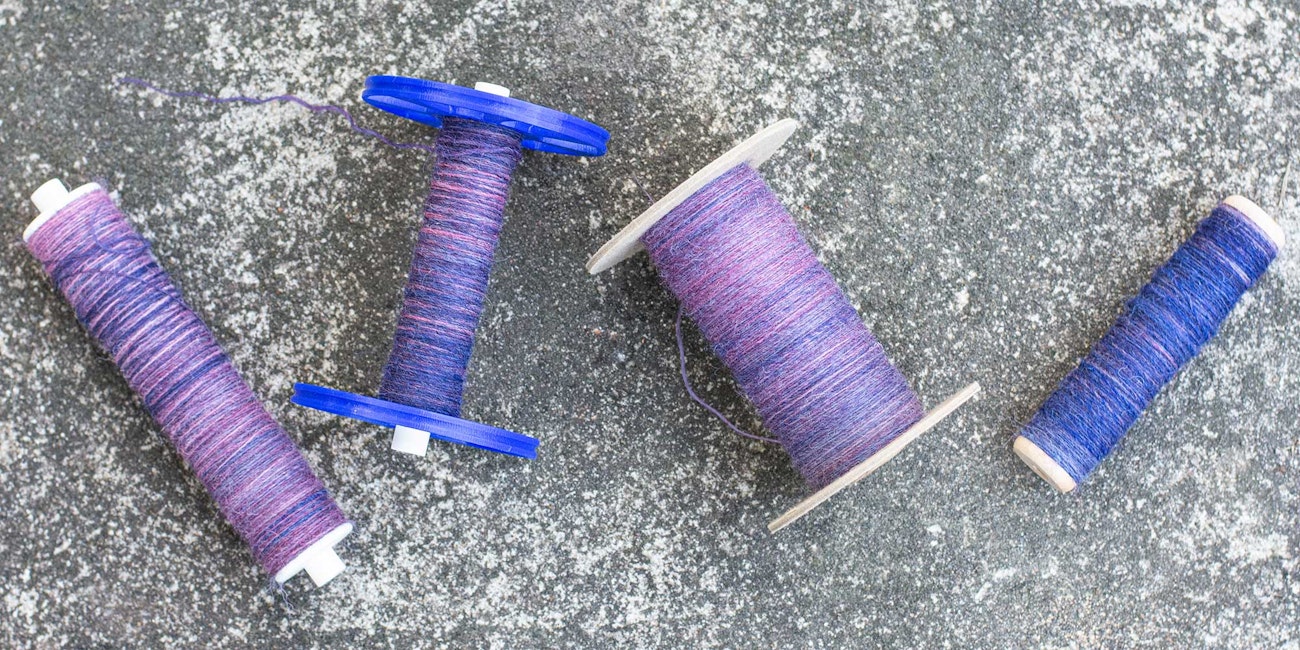 From left: a 6" Schacht weaving bobbin, a WooLee Winder Snap Storage Bobbin on a 4" Schacht weaving bobbin, a cardboard sectional weaving bobbin, and a 4" Harrisville weaving bobbin.
From left: a 6" Schacht weaving bobbin, a WooLee Winder Snap Storage Bobbin on a 4" Schacht weaving bobbin, a cardboard sectional weaving bobbin, and a 4" Harrisville weaving bobbin.
One Last Consideration
No matter what type of storage bobbin you choose, it’s a good idea to make sure it’s also compatible with your lazy kate. In particular, some weaving bobbins have a very narrow diameter to facilitate passing a shuttle through a narrow shed. I was unable to use these with any of my lazy kates, although if these are your preferred bobbins for weaving, you could certainly rig up a DIY kate!
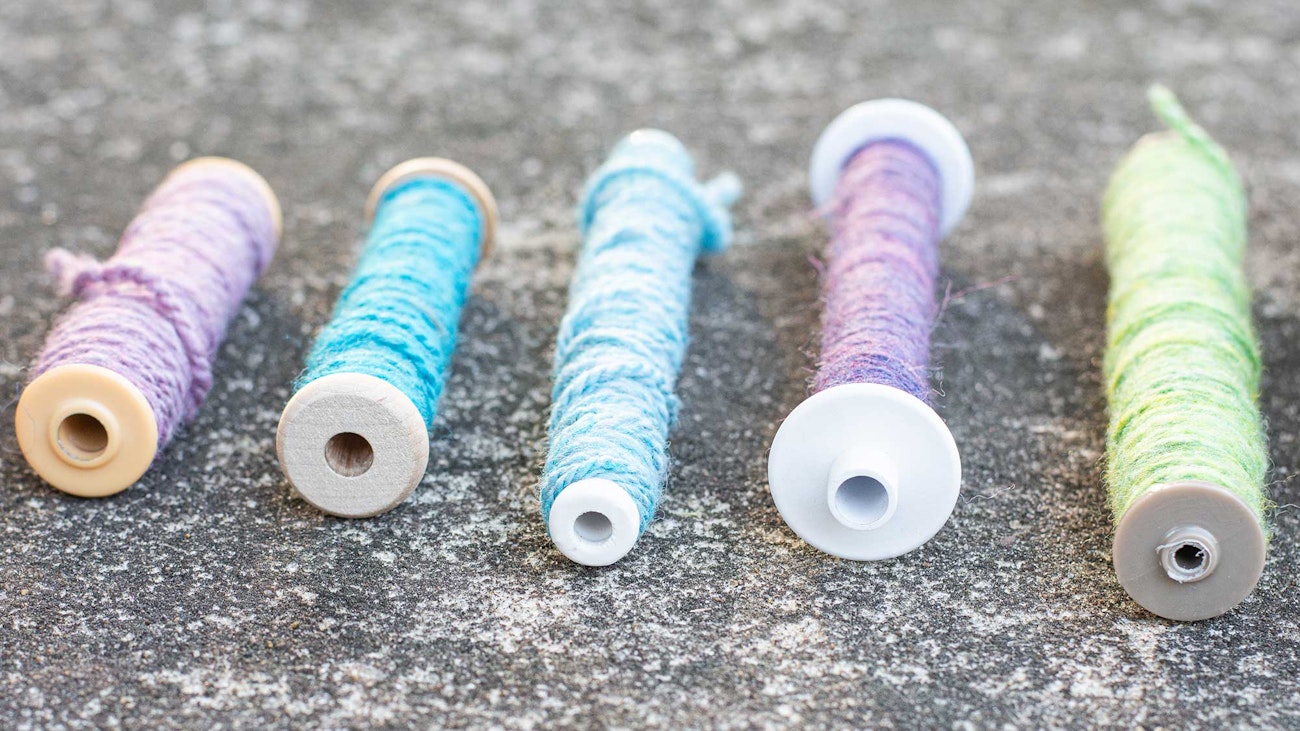 Most of these bobbins fit on Pamela's lazy kate, but one doesn't. Be sure and check before committing to your choice.
Most of these bobbins fit on Pamela's lazy kate, but one doesn't. Be sure and check before committing to your choice.
Further Reading
- Not sure why you should use storage bobbins? Editor Kate Larson makes a case in “Be Kind, Rewind: Bobbin Winders to the Rescue.”
- Looking for a more eco-friendly storage bobbin? Check out “Bobbins in Your Backyard.”
Pamela K. Schultz is the content editor for Spin Off. She spins, knits, weaves, and gardens in coastal North Carolina, and is trying get better about actually plying her singles instead of ply-crastinating.

